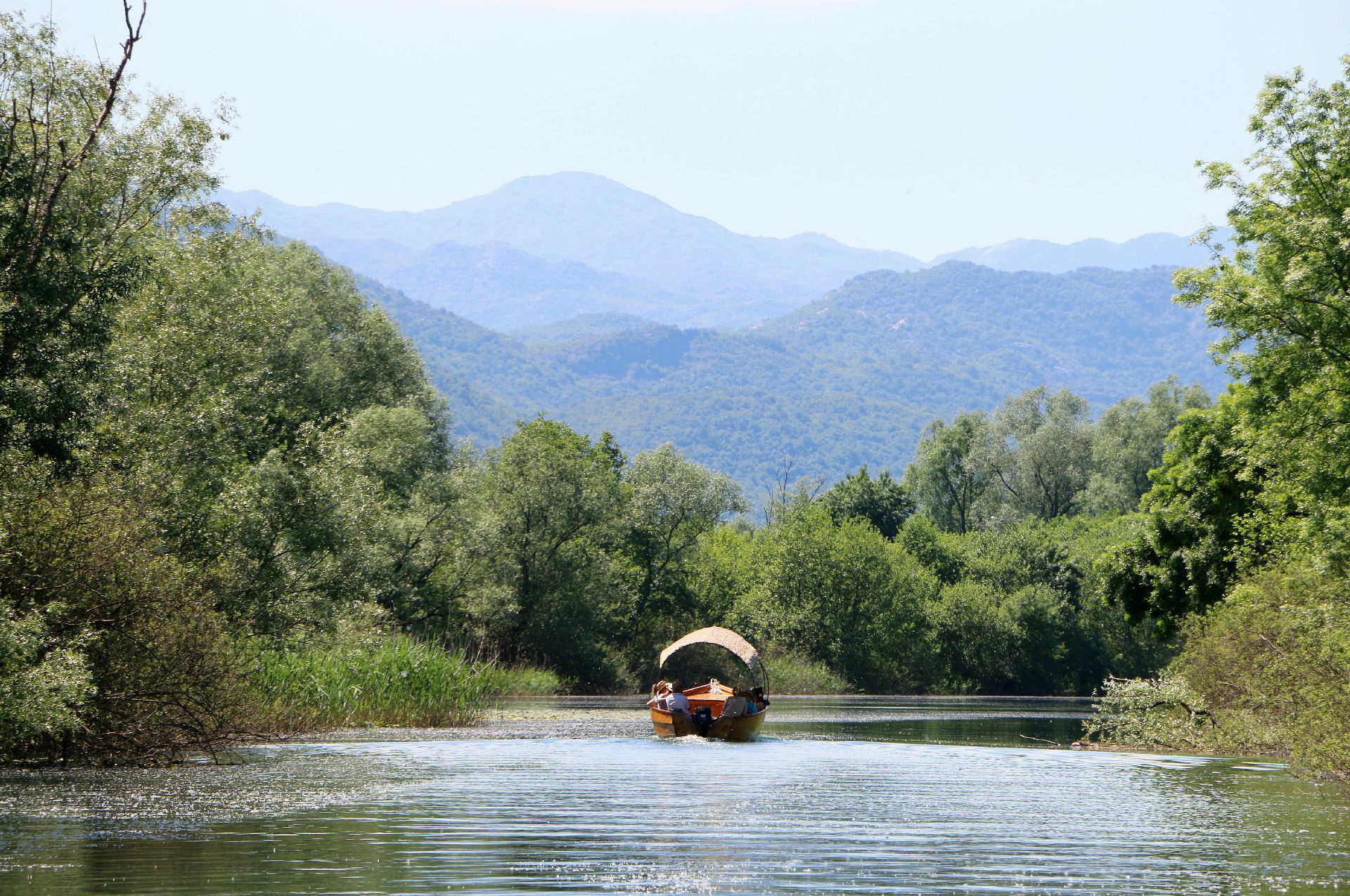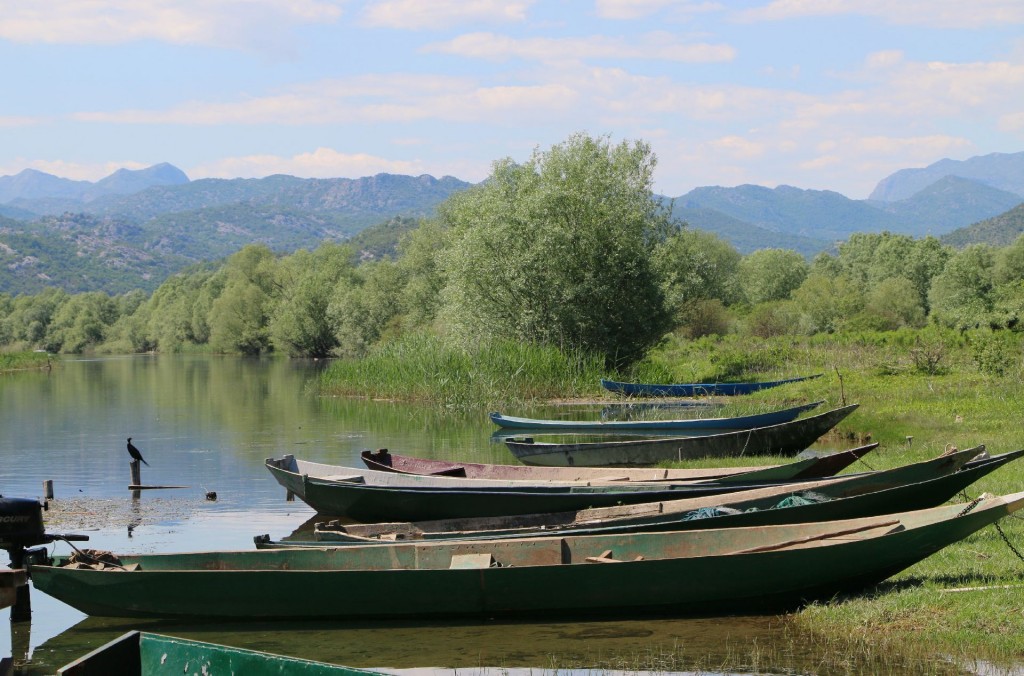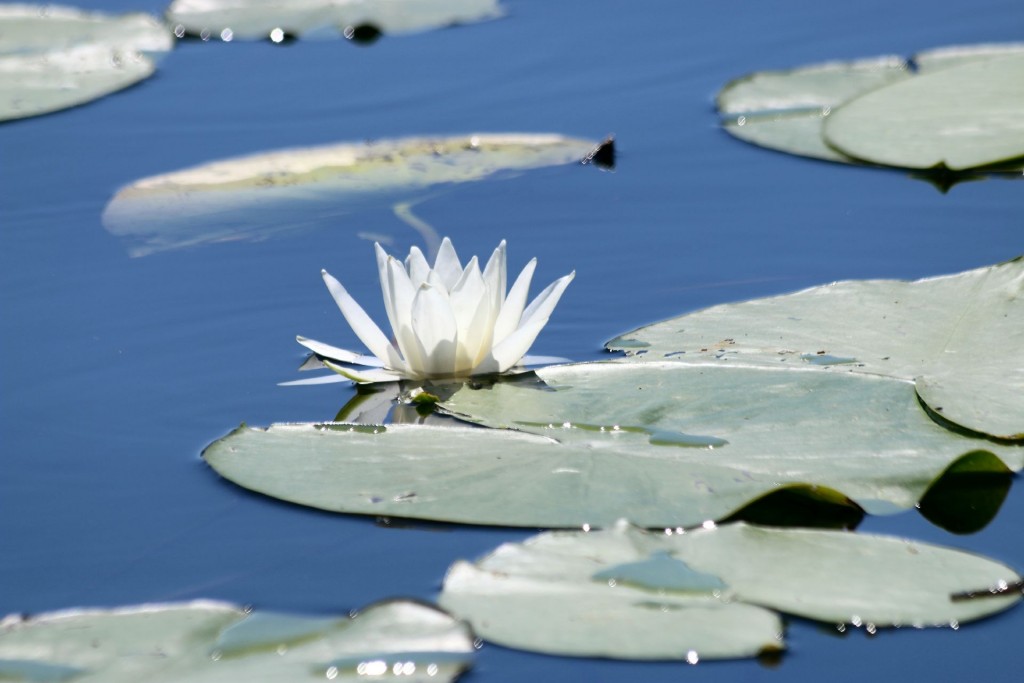 It was a pleasant surprise to be invited by our friends from Skadar Lake – Boat Milica (phone: 068 702376; email: skadarlakeboatmilica@gmail.com) to join the Dabanović family and their guests – accompanied by Emma Heywood from Undiscovered Montenegro (phone: 069 402364; email: enquiries@undiscoveredmontenegro.com) – on a pioneer boat ride to the Kosmač Monastery. This would be a boat cruise to the northern part of Skadar Lake that had not been organized for tourists yet and we were very curious to spend a day in an area that was still unknown to us. And I can assure you: it was a great experience!
It was a pleasant surprise to be invited by our friends from Skadar Lake – Boat Milica (phone: 068 702376; email: skadarlakeboatmilica@gmail.com) to join the Dabanović family and their guests – accompanied by Emma Heywood from Undiscovered Montenegro (phone: 069 402364; email: enquiries@undiscoveredmontenegro.com) – on a pioneer boat ride to the Kosmač Monastery. This would be a boat cruise to the northern part of Skadar Lake that had not been organized for tourists yet and we were very curious to spend a day in an area that was still unknown to us. And I can assure you: it was a great experience!
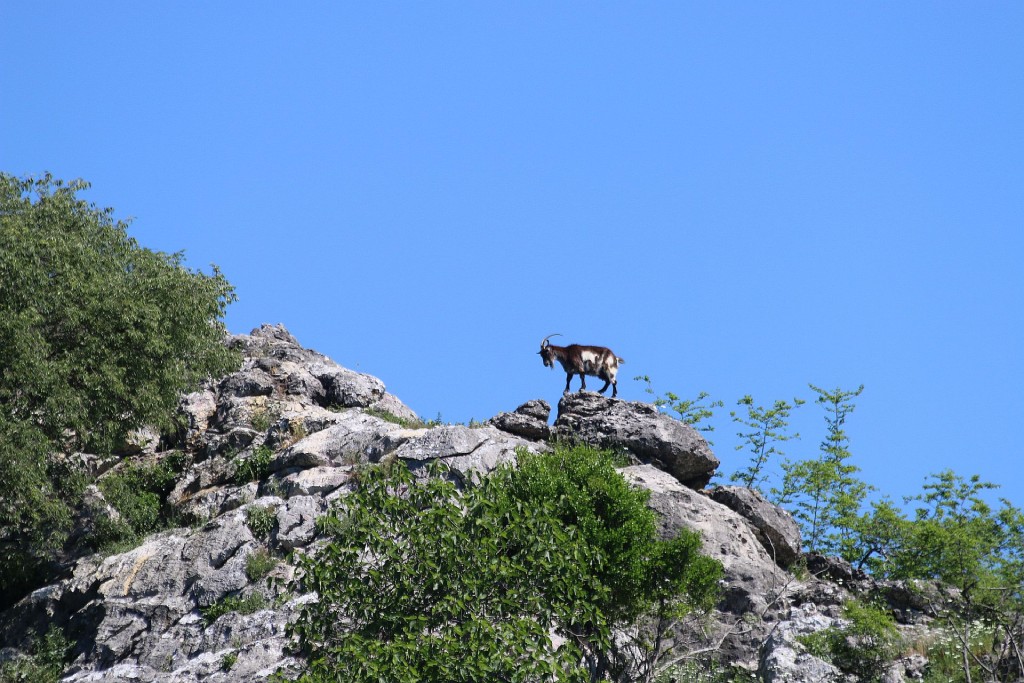 We left from Virpazar in the morning with two traditional wooden boats; apart from „Milica“, recently another boat of the same size and model – called „čun“ – had been manufactured (photo 1). The sharp prow of such boats – called „špirun“ – is suitable for penetrating water lilies and reed fields.
We left from Virpazar in the morning with two traditional wooden boats; apart from „Milica“, recently another boat of the same size and model – called „čun“ – had been manufactured (photo 1). The sharp prow of such boats – called „špirun“ – is suitable for penetrating water lilies and reed fields.
The weather was perfect, everybody was in a good mood and it promised to become a varied and adventurous day trip.
Passing under the Vranjina bridge, we could see the ruins of the old Lesendro Fortress from the water side (see my blog post: Skadar Lake: a boat cruise to the Kom Monastery). The island of Vranjina, now connected with the mainland by a road and railroad, used to be a place where Montenegrin families could hide from blood feuds in the old times.
Slowly finding our way through the fields of white and yellow water lilies that were already flowering (photo 2) on the Lake, we could hear the sounds of numerous water birds: cormorants, herons, sea gulls, grebes, coots and terns. Some huge trees seemed to be black; hundreds of cormorants were resting on the branches, drying their wings.
 The skipper led us through vast reed beds and along rocky islands, so-called “gorice”. What a surprise to see a flock of goats high above us, on the top of the rocks (photo 3)! They are usually transported to the island by wooden fishing boats and they can live here in the wild.
The skipper led us through vast reed beds and along rocky islands, so-called “gorice”. What a surprise to see a flock of goats high above us, on the top of the rocks (photo 3)! They are usually transported to the island by wooden fishing boats and they can live here in the wild.
The trip continued through the Karatuna River created by a big spring in the area of Dodoši. In my opinion, this is one of the most beautiful parts of Skadar Lake National Park. Once the natural border between Montenegro and Turkey, it is now a real “jungle”. Fields of yellow irises could be spotted among the willows on the banks of the river. No houses, no people, just the clean and transparent water of the river and the wilderness. Countless sounds from nature. Different green colors of trees and plants. Fish swimming under the transparent water surface. Birds flying among the trees. A natural wonder!
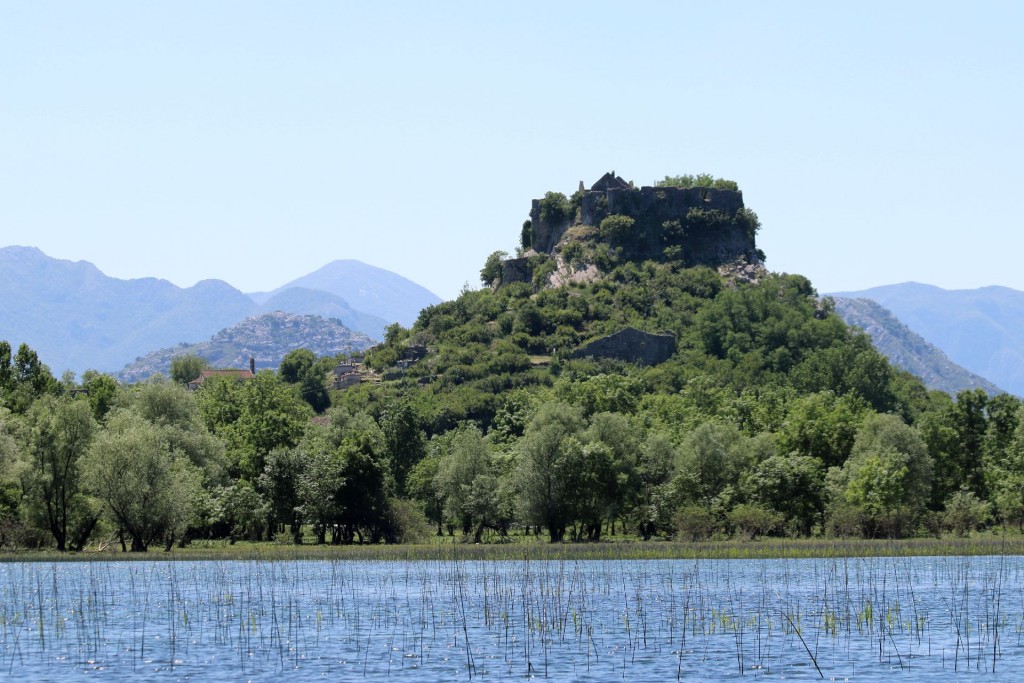 This area is the home of the yellow squacco heron (Ardeola ralloides), a bird that lives in marshy wetlands in warm countries only (photo 4).
This area is the home of the yellow squacco heron (Ardeola ralloides), a bird that lives in marshy wetlands in warm countries only (photo 4).
Finally, the traditional fishing village of Dodoši appeared before our eyes. We passed under the low wooden bridge and continued to a totally unknown part of Skadar Lake National Park, Malo Blato (in translation: Little Mud). This is a small lake, quiet and clean, and it is fed by the source Bolje Sestre. The view of the Žabljak Crnojevića Fortress, dominating the entrance of Malo Blato, was spectacular (photo 5). It was built at the end of the 14th century by the Crnojević dynasty, but the Turks conquered it in 1478 and the fortress-town remained under their rule for the next 400 years.
 Passing Malo Blato, we arrived at the Kosmač Monastery, one of the hidden treasures of Skadar Lake. It is situated on the Kosmač Island and dedicated to St. George the Martyr.
Passing Malo Blato, we arrived at the Kosmač Monastery, one of the hidden treasures of Skadar Lake. It is situated on the Kosmač Island and dedicated to St. George the Martyr.
The only inhabitant of this monastery is Father Serafim. He welcomed us cordially (photo 6) and showed us the complex and the church that was recently reconstructed (photo 7). Originally, the monastery dates back to the 14th century. It was destroyed several times by the Turks. The beautiful frescoes were painted by a Serbian painter in 2010, but due to flooding they lost their bright colors, so that they seem to be much older.
 Wild laurel trees grow abundantly around the monastery. It is interesting to know that wedding garlands for royal weddings in medieval times were made of laurel.
Wild laurel trees grow abundantly around the monastery. It is interesting to know that wedding garlands for royal weddings in medieval times were made of laurel.
After the reconstruction of the monastery, the old folk customs were restored and couples get married again in the Kosmač Monastery, with wreaths of laurel picked on St. George Day. Also baptisms are carried out in the water of the Lake in front of the church.
After a break among the laurel trees, it was time to go back. Although the lake water was still rather cold, some of the guests were eager to swim in the Karatuna River (photo 8) and enjoyed jumping from the bridge in Dodoši.
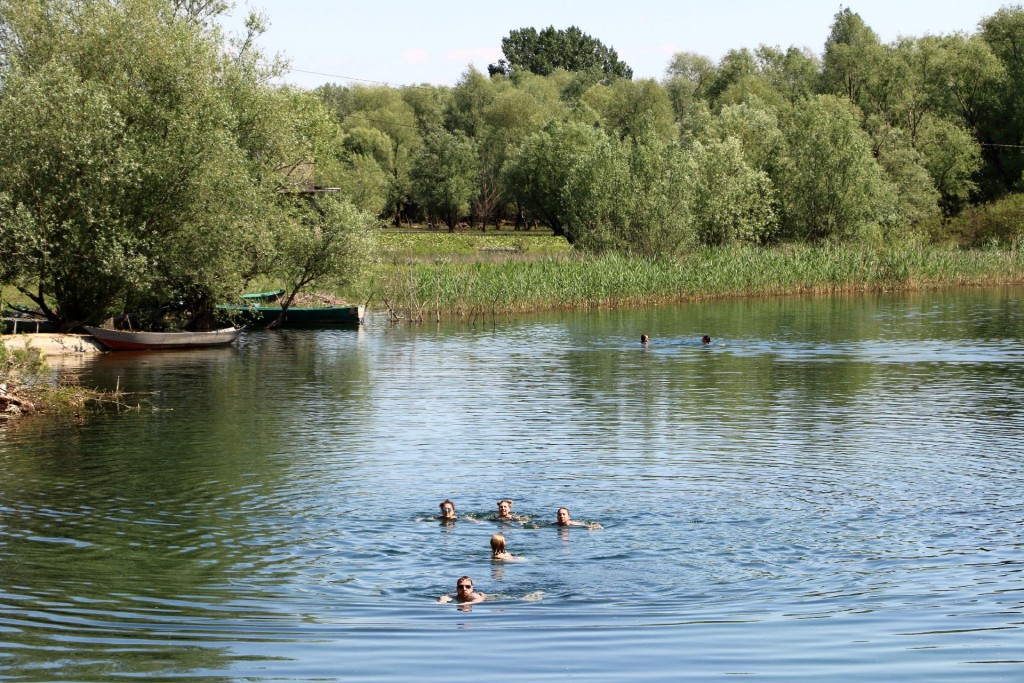 The ride back to Virpazar was relaxing. Once more we could enjoy the fantastic landscape and listen to the sounds of nature.
The ride back to Virpazar was relaxing. Once more we could enjoy the fantastic landscape and listen to the sounds of nature.
And I can confirm: a boat cruise to the Kosmač Monastery is one of the most COMPLETE and VARIED boat excursions you can make on Skadar Lake. It is an opportunity to enjoy nature in all its aspects, to see an important cultural monument, to watch birds and – last but not least – to swim in the transparent Karatuna River!
